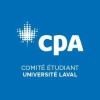
TGV:Use of the Quick Diagnostic Test of the Influenza and the Infection With RSV by the Paediatric...
InfluenzaRespiratory Syncytial VirusesThe aim of this study is to evaluate the impact of the use of a quick diagnostic test of infection with RSV and influenza virus on the assumption of clinical responsibility of the children consulting at the Paediatric Emergency Unit.

Isopropyl Alcohol Inhalation as Anti-emetic Therapy in the Emergency Department
NauseaVomitingNausea and vomiting is a common and distressing presenting complaint in Canadian emergency departments. Commonly used nausea medications have proven to be effective in certain patient populations, for example cancer patients. However, not one has been proven to be more effective that the other in the emergency department setting. In addition, many are associated with significant side effects and have the potential to interact with a patient's home medications. This limits their use in the emergency department until the patient is seen and assessed by their treating physician. Many studies have shown that nasal inhalation of alcohol swabs is an effective therapy in relieving nausea and vomiting in post-operative patients after surgeries. The goal of this study will be to determine the effectiveness of alcohol swabs in the emergency department setting in relieving nausea and vomiting.

Sphenopalatine Ganglion Block for Postdural Puncture Headache in the Emergency Department
Postdural Puncture HeadacheThis study evaluates sphenopalatine ganglion block (SPGB) for the treatment of postdural puncture headache (PDPH) in the emergency department (ED). Half of the patients will receive a true nerve block with lidocaine and bupivacaine. The other half will receive a placebo nerve block.

Impact Of A Health Care Protocol For Patients Suffering Symptoms Of Mild Acute Viral Bronchiolitis...
BronchiolitisAcute viral bronchiolitis is the principal cause of lower respiratory tract infection in infants worldwide. It is characterized by a first episode of respiratory distress preceded by rhinorrhea, cough and fever. The majority of patients present with mild symptoms which can be treated safely at home by parents. Every year between October thru April emergency departments in North America are overwhelmed with patients waiting to be seen with mild respiratory infections, such as bronchiolitis. Thus new strategies in health care have to be elaborated to reduce costs and waiting time in the emergency department. The investigators hypothesize that patients liberated from triage with mild acute viral bronchiolitis would have the same rate of office re-visits than those with mild acute bronchiolitis in the emergency department.

Professional Development in Emergency Medical Services
Clinical Decision SupportClinical Practice Guidelines1 moreThe ProDEms-trial focuses on nurses and ambulance drivers working in prehospital care, taking care on the one hand of patients suffering from time-sensitive critical conditions like STEMI, acute stroke or severe traumatic brain injury, and on the other hand of patients whose lives are not in immediate danger but suffer from acute exacerbation of chronic conditions or suffer from acute pain. In the current study the investigators will use a multistage approach to test the hypothesis whether the use of a CDSS in prehospital emergency care will: 1. Improve protocol adherence, 2. Reduce emergency department length of stay, 3. Improves diagnostic accuracy; without impeding the workflow of the prehospital team or impairing patient safety.

Emergency Department (ED) Self-Monitoring Pilot COVID-19
COVIDCovid-191 moreThis feasibility study is being conducted to understand how discharged emergency department patients who were tested for the SARS-CoV-2 virus (COVID-19) engage with a symptom-tracking web application. Study participants that are enrolled in the study will be asked to enter daily information about their health into the CovidX web application (app.). In addition, patients will answer questions regarding anxiety levels, use a pulse oximeter to record information (if you own one or are given one). The investigators predict that participants will be able to engage with the CovidX web application over several days to weeks for the purposes of symptom tracking, and may have decreased anxiety over the study period.

China Research for Severe Spontaneous Intracerebral Hemorrhage(CRISIH)
Severe Spontaneous Intracranial HemorrhageLong-term Antiplatelet Treatment2 moreBackground: Despite the capability of emergency surgery to reduce the mortality of severe spontaneous intracranial hemorrhage (SSICH) patients, the effect and safety of surgical treatment for severe spontaneous intracranial hemorrhage (SSICH) patients receiving long-term oral antiplatelet treatment (LOAPT) remains unclear. In consideration of this, the cohort study is aimed at figuring out the effect and safety of emergency surgery for SSICH patients on LOAPT. Methods: As a multicenter and prospective cohort study, it will be conducted across 7 representative clinical centers. Starting in September 2019, the observation is scheduled to be completed by December 2022, with a total of 450 SSICH patients recruited. The information on clinical, radiological, and laboratory practices will be recorded objectively. All of the patients will be monitored until death or 6 months after the occurrence of primary hemorrhage. Study Design: In this study, two comparative cohorts and an observational cohort will be set up. The primary outcome is the effect of emergency surgery, which is subject to assessment using the total mortality and comparison in the survival rate of SSICH patients on LOAPT between surgical treatment and conservative treatment. The second outcome is the safety of surgery, with the postoperative hemorrhagic complication which is compared between the operated SSICH patients on and not on LOAPT. Based on the observation of the characteristics and outcome of SSICH patients on LOAPT, the ischemic events after discontinuing LOAPT will be further addressed, and the coagulation function assessment system for operated SSICH patients on LOAPT will be established. Objective: In this study, investigators will estimate the effect and safety of emergency surgery for SSICH patients on LOAPT, which will provide an evidence for management in the future.

Influence of a Questionnaire on Patients' Emergency Room Expectations
EmergenciesSatisfaction3 moreThe goal of this study is to determine whether a novel questionnaire designed to illicit patient's self-reported expectations across four domains (overall purpose of visit, medication intervention, imaging intervention and disposition) improves patient-provider communication as evaluated by an exit survey during an emergency room visit.

Treatment Of Fever In The Emergency Department
FeverFever is a frequent cause of admission to the Emergency Department (ED) around the world. While it can be caused by a wide range of conditions, the most effective treatment based on its etiology is still undetermined. This observational, prospective, single-center study enrolled adult patients who accessed the ED for fever, with the aim to define the most effective treatment for them.

Prognosis of Geriatric Patients With Non-bedded Night in the Emergency Department: a Multicenter...
in Hospital MortalityGeriatricRetrospective, multicenter, French cohort study. Data from patients over 75 years of age who visited the emergency department on 12 and 13 December 2022 could be collected until their discharge from hospital and for a maximum of 30 days. Data from patients who spent the night on a stretcher (stretcher group) as well as from a group of patients who spent the night in a bed (hospital bed group) after a visit to the emergency department will be collected. The characteristics of the patients and their stay in the emergency room will be collected, and their hospital stay (truncated at 30 days) will be analyzed in terms of morbidity and mortality. Main objective: To study the truncated 30-day in-hospital mortality of patients who spent a night on a stretcher in the emergency department. Secondary objectives: To describe the characteristics and hospital stay of patients who spent a night on a stretcher To compare the morbidity and mortality of patients who spent the night on a stretcher with patients who spent the night in an inpatient bed after an emergency visit;
